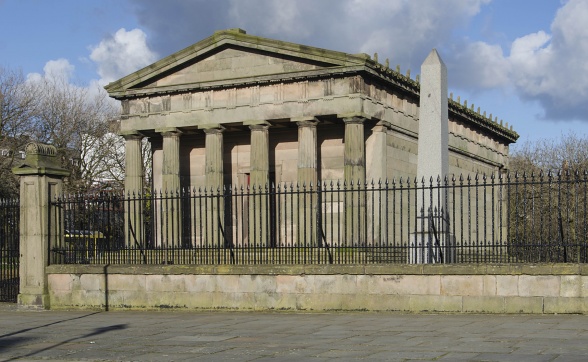
Mathias Poledna, Indifference, 2018. Installation view at the Oratory, Liverpool Biennial 2018. Photo: Thierry Bal

Photo: Oleksander Burlaka
Mathias Poledna, Indifference, 2018. Installation view at the Oratory, Liverpool Biennial 2018. Photo: Thierry Bal
Situated near Liverpool Cathedral, the Oratory was designed by John Foster in the Greek Revival style and was originally the chapel of St James’s cemetery. It houses an outstanding collection of 19th-century memorial sculpture.
Screened within a specially designed structure, Mathias Poledna’s new film installation further advances his exploration of modernity’s visual imaginary. The work is set against the backdrop of early 20th-century European history, a period of traumatic modernisation and conflict. Forgoing expansive narratives, Poledna instead focuses on the transient and the disjointed. The work draws from contiguous art practices, such as literature and painting, as well as from popular culture, in particular explorations of history in genre and auteur film. Working primarily in film, Poledna creates highly concentrated pieces that share a rigorous interest in the language of film and, more broadly, of images in our collective imagination, present and past.
The Oratory is part of National Museums Liverpool
Situated near Liverpool Cathedral, the Oratory was designed by John Foster in the Greek Revival style and was begun in 1827. It was originally the chapel of St James’s cemetery. Funeral services were held here when burials took place in the cemetery below, and monuments to the dead were placed around the walls. The cemetery closed in 1936, and in 1986 the Oratory became part of National Museums Liverpool. It houses an outstanding collection of 19th-century memorial sculpture.
The Oratory
Liverpool Cathedral
St James Mount
Liverpool
L1 7AZ
Open Tuesday–Sunday 11am–6pm, Free
Liverpool Biennial
55 New Bird Street
Liverpool L1 0BW
- T +44 (0)151 709 7444
- info@biennial.com
Liverpool Biennial is funded by
Founding Supporter
James Moores





